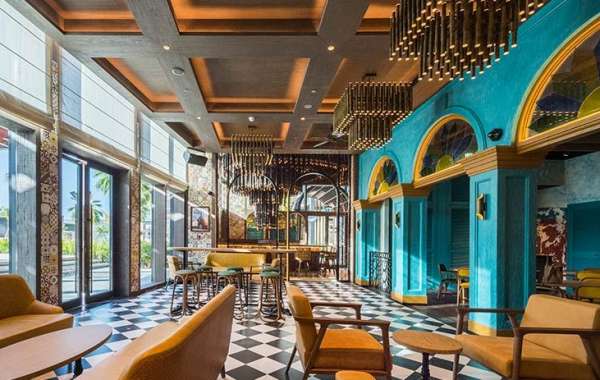In today’s dynamic work environment, the traditional office setup is rapidly evolving. Businesses are increasingly recognizing the need for multi-purpose workspaces that not only foster flexibility but also enhance efficiency. At BondInteriors, we specialize in crafting innovative interior solutions that cater to the modern workforce’s diverse needs. This article explores the concept of multi-purpose workspaces, the benefits they offer, and how to design such spaces effectively.
Understanding Multi-Purpose Workspaces
A multi-purpose workspace is designed to serve multiple functions, accommodating various activities within a single area. These spaces can be used for collaboration, individual work, meetings, or social gatherings, providing the versatility that contemporary organizations require. The shift towards remote and hybrid work models has further emphasized the importance of adaptable workspaces that can easily transition from one use to another.
Benefits of Multi-Purpose Workspaces
Flexibility: One of the most significant advantages of multi-purpose workspaces is their flexibility. As work requirements change, these spaces can be reconfigured to suit different tasks. For instance, an open area can be transformed into a meeting room with the addition of movable partitions and furniture.
Cost-Effectiveness: Designing a space that can serve multiple purposes can significantly reduce real estate costs. Companies can optimize their office footprint by utilizing fewer square meters for various functions, thus saving on rent and maintenance expenses.
Enhanced Collaboration: Multi-purpose spaces encourage collaboration among team members by breaking down the barriers of traditional office layouts. When employees can easily transition between different areas for brainstorming sessions or informal meetings, it fosters creativity and teamwork.
Increased Employee Satisfaction: Employees appreciate having access to flexible workspaces that cater to their varying needs throughout the day. Whether they require a quiet area for focused work or a lively space for team brainstorming, multi-purpose workspaces contribute to overall job satisfaction.
Future-Proofing: As work trends continue to evolve, having adaptable spaces allows businesses to remain agile and responsive to future demands. Multi-purpose workspaces can be easily updated with new furniture or layout changes to accommodate shifting workplace trends.
Designing Multi-Purpose Workspaces
When creating multi-purpose workspaces, several key design principles should be considered to ensure functionality, comfort, and aesthetics:
Open Layouts with Flexible Zones: Start with an open layout that encourages flow and movement. Designate flexible zones within the workspace that can be used for various activities. Use furniture that can be easily rearranged or stored, such as modular seating, foldable tables, and mobile workstations.
Incorporating Technology: Equip multi-purpose spaces with the latest technology to support various functions. This includes interactive screens for presentations, high-speed Wi-Fi for connectivity, and AV systems for video conferencing. Technology should be seamlessly integrated into the design to ensure ease of use.
Diverse Furniture Options: Invest in versatile furniture that can serve multiple purposes. For example, use tables that can be adjusted in height for sitting or standing, or include seating options that can accommodate both individual and group settings. Ergonomic designs should also be prioritized to promote employee comfort.
Smart Storage Solutions: Incorporate smart storage solutions to keep the workspace organized and clutter-free. This could include built-in cabinetry, under-desk storage, or mobile carts that can be moved as needed. Effective storage helps maintain a tidy environment, which is essential for productivity.
Natural Light and Biophilic Design: Maximizing natural light in the workspace creates a more inviting atmosphere and enhances employee well-being. Incorporating biophilic design elements, such as indoor plants or living walls, can also contribute to a more refreshing and inspiring workspace.
Zoning for Different Activities: Designate specific areas for different activities while maintaining an open feel. For example, create quiet zones for focused work, collaborative zones for group discussions, and social zones for relaxation and informal gatherings. Use rugs, lighting, and furniture arrangements to define these zones without solid walls.
Incorporate Branding and Aesthetics: The design of a multi-purpose workspace should reflect the company’s brand identity. Use colors, materials, and design elements that align with your brand values to create a cohesive look and feel throughout the space.
Conclusion
Creating multi-purpose workspaces is no longer just a trend but a necessity for modern organizations aiming to enhance flexibility and efficiency. At Bond Interiors, we understand the importance of designing spaces that adapt to the ever-changing needs of businesses and their employees. Our expertise in creating versatile, innovative, and aesthetically pleasing interiors ensures that your workspace not only meets functional demands but also inspires creativity and collaboration.
If you’re considering transforming your office into a multi-purpose workspace, we invite you to explore our services athttps://bondinteriors.com/ Our team of experts is ready to collaborate with you to design a space that reflects your unique vision while maximizing productivity and employee satisfaction. Together, we can create an environment that supports your business goals and empowers your workforce.




